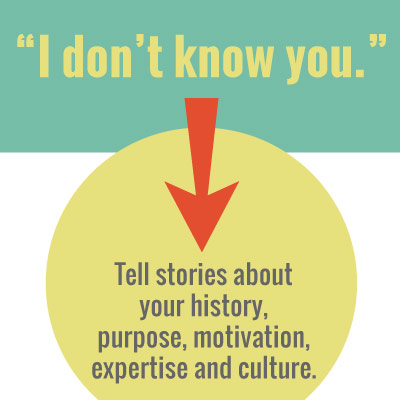Creating Buyer Personas: Meet Your New Best Friends!
Creating a Buyer Persona for marketing is like writing a description of your best friend.
Think about yours. Could you describe them, describe what they love, hate, and what keeps them up at night? Sure you could! and write a complete profile? 
Creating a buyer persona profile is just like that. It isn’t as easy as calling up your best friend, but it can be done with client interviews, website surveys, a little empathy and a dose of imagination. If you can put yourself in your prospects shoes, you can create detailed buyer personas.
Why Define Buyer Personas?
It’s simple, buyers are people. Having a better understanding of these people and their behaviors, concerns, priorities and deepest fears is crucial to your marketing. The content you create needs to be aimed at answering their questions, solving their problems and creating value for them. If you develop your marketing strategies without having an understanding of what your customer needs, you will fail.
Doing your research takes time, but it’s time well spent and the payoff is huge. When your interview your customers you are guaranteed to learn something completely new about them that would never have thought of asking. The insights unique insights you can gain are invaluable and worth the extra effort.
Have More Than 1 Buyer Persona
Your buyer’s personas should vary because prospects (customers or potential customers) are all at different stages of purchasing. Your content should address customers in each different stage.
Stage 1: I Need Something
You will want a persona that represents the early stages of the buying process. Someone who has identified a need and is thinking about a solution. They might be “just looking.” Blog articles around the subject, your websites homepage and your social media presence come into play here.
Stage 2: I Need Information
The next stage is the information gathering stage. These personas already know they need to purchase a product or service, and are now shopping around and looking for information. In today’s world, this is usually done online. Your personas will compare your company’s web presence and service descriptions with other companies they think can meet their needs. First impressions count here!
Stage 3: Let Me Compare
The third stage is comparison. These personas have narrowed it down to several companies or products and now need more detail. Different aspects or elements like downloadable product guides, pricing tables, spec sheets and product comparisons are important at this stage.
Stage 4: I’m Ready To Make A Decision
These personas have your information. Now they may take this information to a team and discuss whom they want to meet. This decision is nearly made before you even get in front of them!
Stage 5: I’m Already A Client
Just because someone is already a client, doesn’t mean you stop marketing to them. Give them a reason to congratulate themselves on choosing YOU, and provide more reasons for them to refer you to others. Newsletters, blog posts and social media are great ways to stay top-of-mind. This is why knowing WHO you are creating content for and answering their questions online is so important!
Here is an example of a buyer persona we created.
Mary Smith
Job Description:
- Marketing Manager
- Working at a mid-sized company for 3 years
- Heads a department of 2 people
- Overworked because she wears many hats and is understaffed
Demographic:
- Age: 42 (took an average of 35-45)
- Married with 2 young children
- Lives in Brooklyn
- Income: $150K
- Husband works full time in a law firm
- Reads Huff Post, NY Times and Tech Crunch blogs
Personality
- Creative
- Organized
- Smart
- Tech-savvy
- Stressed
- Good delegator
- Fears, concerns and pain points
- Her company’s sales are slipping
- She is having trouble keeping up with new marketing techniques
- Her staff is also overworked
- Doesn’t know much about SEO but knows she needs it
- Wants to keep up with a company blog, but doesn’t have time
- Has the budget to hire outside contributors
- Doesn’t know how to source talent
Ultimate fear
Her company will go out of business because their competitors are doing better online marketing, and she will lose her job.
The ultimate fear is the key to how you can help Mary solve her problem. Getting someone to reveal that can only be done by talking to them.
Having an outside person like your Brand Manager conduct an interview often reveals things they wouldn’t ordinarily tell you.






